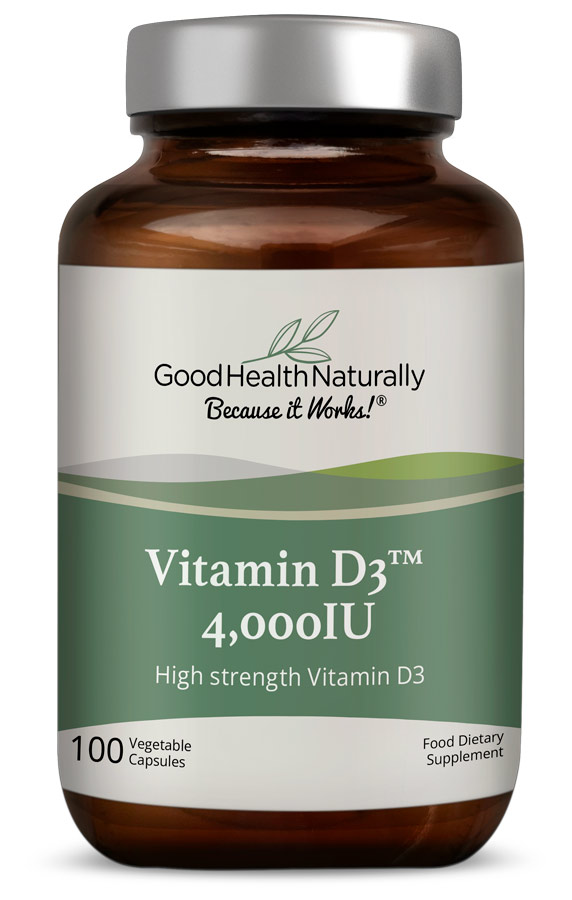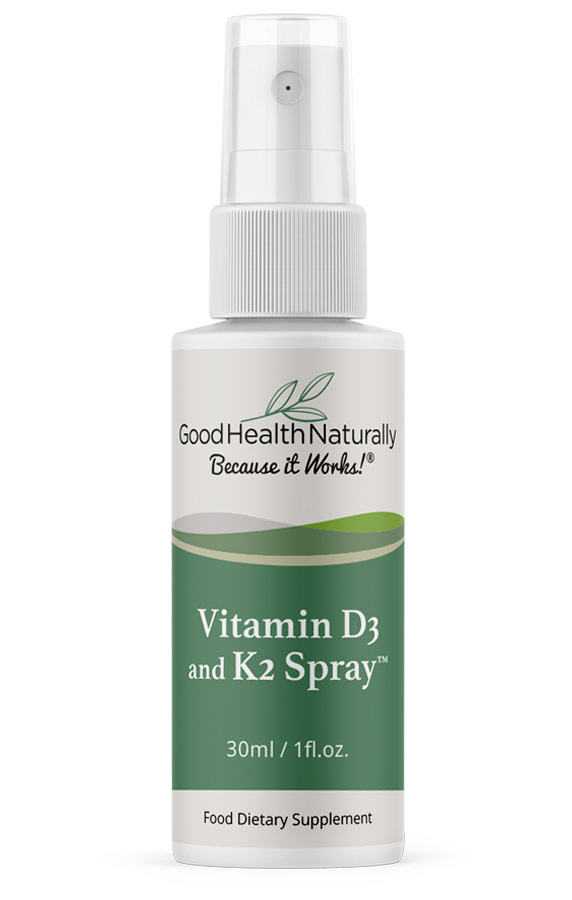With winter fast approaching and the nights drawing in, have you started thinking about your vitamin D levels? If not, you should. Known as the ‘sunshine vitamin,’ our main source is from our skin’s exposure to ultraviolet rays from the sun. Recent figures show that almost a quarter of adults aged 19–64 years in the UK are severely deficient in this crucial vitamin and at risk of a winter vitamin D deficiency.
Understanding the Role of Vitamin D in the Body
Since its discovery in the early 20th century, vitamin D has been synonymous with strong bones and teeth. A severe deficiency can lead to bone problems such as rickets in children, and bone pain or muscle weakness in adults. Older adults with low levels also face an increased risk of falls.
Beyond bone health, vitamin D receptors have been found in more than 30 different tissues in the body, including the brain, heart, skin, and eyes, showing how essential it is for overall well-being.
Vitamin D and Immune Health
Known for its powerful effects on the immune system, research shows that low vitamin D levels are linked to a higher risk of infections. It is thought that vitamin D helps reduce the risk of microbial infections by supporting the body’s innate immune response and reducing inflammation. Essentially, vitamin D may help our immune system stay balanced and strong enough to fight infections, without becoming so overactive as to cause harm.
The Link Between Vitamin D and Mental Wellbeing
The sunshine vitamin also plays a vital role in cognitive and emotional health. Studies show that people with very low blood levels of vitamin D are more than twice as likely to develop Alzheimer’s disease or other types of dementia. Low vitamin D levels have also been associated with seasonal affective disorder SAD, low mood and depression, all of which tend to worsen during the darker months.
Vitamin D and Heart Health
Research suggests that vitamin D deficiency may increase the risk of heart disease, stroke and high blood pressure. Adequate vitamin D levels support cardiovascular health by maintaining blood vessel flexibility and reducing inflammation. A growing body of evidence links healthy vitamin D levels with lower risk of heart-related complications and improved blood pressure control.
How the Body Makes Vitamin D From Sunlight
As very few foods contain significant amounts of vitamin D, sunlight is the best natural source. When UVB rays hit the skin, they convert a cholesterol-based substance called 7-dehydrocholesterol into vitamin D (cholecalciferol). This is then carried to the liver, where it is changed into calcidiol (25-hydroxyvitamin D), and finally to the kidneys, where it becomes the active form, calcitriol (1,25-dihydroxyvitamin D).
However, this process depends on regular sunlight exposure. Compared to our ancestors, our modern indoor lifestyles mean many of us are not getting enough sun exposure even in the summer. The skin cancer message has been strong, and many people cover themselves entirely with clothes and sunscreen before venturing outside, rather than gently exposing themselves to the sun for short periods. In the winter, even if the sun comes out, it usually contains too little UVB for vitamin D synthesis.
Who Is Most at Risk of a Winter Vitamin D Deficiency?
For many people, a winter vitamin D deficiency can develop quietly, while certain groups are particularly vulnerable. Those more at risk include:
- People who spend most of their time indoors, like housebound people, night workers or hospital patients
- Individuals who cover their bodies for religious or cultural reasons
- Those with darker skin tones
- Older adults who often have thinner skin and less efficient synthesis
- People who are overweight or pregnant
- Genetic factors may also play a role, as several variants have been identified that affect how vitamin D is metabolised, transported, or bound to receptors in the body.
Recognising and Preventing a Winter Vitamin D Deficiency
Symptoms of low vitamin D can be subtle but may include fatigue, muscle weakness and bone pain. Some people experience frequent infections, inflammation, or skin issues like eczema. Hair loss, low mood and poor concentration are also possible signs. Because these symptoms can easily be mistaken for other conditions, a simple blood test is the best way to determine whether you are deficient.
Choosing the Right Vitamin D Supplement
Taking a daily supplement is a simple step to protect against winter vitamin D deficiency and its long-term effects.
The UK government recommends 10 micrograms (400 IU) of vitamin D daily from October to March for all adults and children aged 1 year or older. Those with limited sunlight exposure or darker skin should consider taking supplements year-round.
Vitamin D2 vs D3 – What’s the Difference?
Vitamin D exists in two main forms: D2 (ergocalciferol) and D3 (cholecalciferol). The key difference is that D2 is derived mainly from plant sources, while D3 comes from animal or lichen-based sources. Most supplements provide vitamin D3, as it is generally considered the most effective form for raising and maintaining vitamin D levels. Potency can vary widely, typically between 400 IU and 4,000 IU per serving, and a simple blood test can help determine the right dosage for your needs.
It’s also worth noting that magnesium plays a vital role in activating vitamin D within the body. Adequate magnesium helps the enzymes that convert vitamin D into its active form work efficiently, supporting optimal absorption and effectiveness. For more on magnesium’s role in inflammation, mood, and overall wellbeing, read our related article on Magnesium and Inflammation.
Vegan and Sublingual Options
There are numerous products available now containing a vegan source of D3, produced from lichen extract. Sublingual sprays are often the easiest and most readily absorbed products, as well as being convenient for children.
Vitamin D and Vitamin K: A Powerful Duo
Vitamin D supplements are often sold in a combination form with vitamin K, as the two vitamins work in synergy to support bone health. Vitamin D helps with the absorption of calcium, while vitamin K helps promote the calcification of the bones. Without enough vitamin K, high doses of vitamin D can potentially lead to calcium build-up in the wrong places. Taking D3 and K2 together may help improve bone density, reduce fracture risk, and support heart health by maintaining flexible arteries.
To Conclude
Unfortunately, modern lifestyles and limited sunlight mean many of us aren’t getting enough vitamin D. As the days get shorter, a small daily dose of ‘sunshine’ in supplement form could be one of the simplest ways to protect your health this winter. Taking steps to prevent a winter vitamin D deficiency can make a big difference to your mood, immunity, and long-term wellbeing.
If you’re unsure about your levels, consider a quick blood test or talk to your healthcare practitioner. According to NHS guidance on vitamin D, everyone should consider a daily supplement between October and March. Choosing a high-quality vitamin D supplement, ideally combined with vitamin K2, can help support strong bones, a balanced immune system, and year-round vitality.
It may also help ease seasonal aches. If you often feel stiffer or experience joint discomfort during the colder months, read our related article on Winter Bone Pain and How to Relieve It Naturally for more insight.
Frequently Asked Questions
What are the symptoms of a winter vitamin D deficiency?
Common signs include tiredness, low mood, muscle weakness, and frequent infections. Some people also notice bone or joint pain, poor concentration, or slower recovery from illness. Because these symptoms are often subtle, a simple blood test is the best way to confirm your vitamin D status.
How much vitamin D should I take during winter?
The UK government recommends 10 micrograms (400 IU) of vitamin D daily from October to March for all adults and children aged 1 year or older. Those with darker skin, limited sunlight exposure, or higher vitamin D requirements may benefit from taking vitamin D supplements year-round.
Can you get enough vitamin D from food alone?
It’s difficult to get enough vitamin D from diet alone. While oily fish, egg yolks and fortified foods provide small amounts, most people rely on sunlight or supplements to maintain healthy levels—especially during the winter when UVB light is low.
Should I take vitamin K2 with vitamin D3?
Vitamin K2 works in synergy with vitamin D3 to support bone and heart health. While vitamin D helps the body absorb calcium, vitamin K2 helps direct it into the bones rather than the arteries. Many experts recommend combining the two nutrients for balanced support.
Who is most at risk of a winter vitamin D deficiency?
People who spend most of their time indoors, those with darker skin tones, older adults, pregnant women, and people who cover their skin or use sunscreen extensively are most vulnerable to low vitamin D levels during the winter months.
References
https://cks.nice.org.uk/topics/vitamin-d-deficiency-in-adults/background-information/prevalence/
https://www.gov.uk/government/collections/national-diet-and-nutrition-survey
https://pubmed.ncbi.nlm.nih.gov/35166850/
https://www.gov.uk/government/publications/vitamin-d-supplementation-during-winter-phe-and-nice-statement/statement-from-phe-and-nice-on-vitamin-d-supplementation-during-winter
https://www.ncbi.nlm.nih.gov/books/NBK532266/
https://pubmed.ncbi.nlm.nih.gov/32867112/
https://pubmed.ncbi.nlm.nih.gov/32219282/
https://www.ncbi.nlm.nih.gov/pmc/articles/PMC5613455/
https://www.researchgate.net/publication/224769192_The_Role_of_Vitamin_K_in_Soft-Tissue_Calcification
https://edepot.wur.nl/530952







